Atlantic Monthly Contributors's Blog, page 151
June 3, 2016
Coming to Terms With Tintin

One of my earliest memories is of walking in a city that’s no longer mine, hand-in-hand with a man who’s no longer alive, to a library long-since closed, where I'd borrow comics whose spines adorn my bookshelves to this day. At the age of four, I was captivated by the adventures of Tintin, the boyish reporter, who—accompanied by his dog, Snowy, and an array of supporting but no less endearing friends—traipsed all the way around the world, and even to the moon.
Few things in my life were permanent at that time. We moved every year from one far-flung part of Bombay, as the city by the sea was known then, to another: moves forced by parental job changes and familial instability that meant new homes, new neighbors, new schools, and new friends. Tintin, though, stayed the same. I read and reread the albums we had; I beamed when my father, whose love for Tintin I inherited, bought a new album home from the A.H. Wheeler bookshop at Churchgate station for the princely sum of 18 rupees. And I counted the days until we visited an uncle who owned the entire collection and guarded it jealously in a locked cupboard, to be retrieved when I visited upon the condition it was treated carefully—a condition I’m happy to say I satisfied. My favorite in those days was Tintin in Tibet, a comic whose final frame still makes me emotional. The yeti’s longing for permanent friendship mirrored my own; Tintin’s friendship with Chang was the kind I wanted.
Over the years, my favorites changed, as did the things I saw in them. Flight 714, a story I loved when I was younger, possibly because of the UFOs, hasn’t aged well for exactly that reason; Castafiore Emerald, dull when I was a boy, is now among my favorites, precisely because it’s about nothing. The serialized books—Red Rackham's Treasure and Secret of the Unicorn, Seven Crystal Balls and Prisoners of the Sun, and Destination Moon and Explorers on the Moon—are still appealing, more now for how different they are than for their narratives. But what continues to appeal to me most about Tintin is what attracted me to the series in the first place, the common thread that runs through all the albums: friendship, loyalty, adventure, and, to use a word seldom used anymore, honor. With age, I could add one more thing: familiarity.
Still, idols rarely age well. As I grew older, I learned more about Hergé, Tintin’s creator whose name adorned the top of every album (the name is a play on the inverted initials of his name, Georges Remi). His work on a wartime newspaper allied with the Nazis is well documented, as is the fact that some of his earliest Tintin books disseminated far-right ideas to children. The first two comics are the most controversial: Tintin in the Land of the Soviets, first serialized in 1929, is so transparent in its anti-communist propaganda that Hergé himself tried to suppress its publication in later years. In 1930’s Tintin in the Congo, the Belgian hero’s adventure takes him to his country’s former colony where he “civilizes” the natives (who are portrayed with a combination of paternalistic racism and inferiority), and slaughters animals as a big-game hunter.
Neither comic was available in English until decades later, and it was then that I read them with a mixture of horror, amusement, and embarrassment. In one frame in Congo, an African tribe worships Tintin. In another, he resolves a dispute over a straw hat, leading a member of the tribe to say: “White master very fair. Him give half hat to each one. Him very good white.”
There’s certainly irony in a child of the former colonies idolizing a character who might be dismissed by casual critics as a proxy for the white-man’s burden (and by more serious ones as a racist). But I couldn’t entirely disavow the series. What those comics taught me was that heroes, even boyish, never-aging ones like Tintin, are deeply flawed, and if you ruminate on something long enough, even a cherished childhood memory, you will inevitably see those flaws clearly. There were things that I loved about Tintin that made it easier to reject those things I did not—without ignoring them altogether.
Tintin works against Imperial Japan and European dictatorships, fights slavers, and defends the Roma. In short: He comforts the afflicted.
Rereading Tintin also provides a much more complicated image of Hergé. Tintin, after all, works against Imperial Japan and European dictatorships, befriends Chang, fights slavers, and defends the Roma. In short: He comforts the afflicted, and embodies the values of honor and loyalty to friends.
Years later, before the medium fell on hard times, I found myself working at a newspaper. It's hard to say whether Tintin played a direct role in my choice of career, but the books certainly influenced me enough to want to read and write for a living. Still, I couldn’t help but compare my own work schedule—defined as it was by a demanding editor, deadlines, and ever-shrinking budgets—with Tintin’s. Yes, he’s nominally a reporter, but he rarely seems to file, he travels the world at the drop of a hat, and he engages in the kind of advocacy that would tarnish any contemporary journalist’s reputation. Tintin, I came to realize, is the idealized man-boy, a permanently adolescent European version of Bertie Wooster. Unlike Wooster, though, he is a hero whose superpower is his wit alone, and whose adventures are made possible by his friends and timeless values. In short: the perfect kind of person to appeal to young readers.
When I left Mumbai for the U.S. in 1998, I bequeathed my old, dog-eared, tattered collection—by now almost complete—to my younger brother in a moment of largesse. Those volumes had been amassed carefully over years in newspaper-recycling shops that doubled as used bookstores (a casualty, alas, of the post-paper era). Giving them up, along with my Asterix comics, books on cricket, and volumes of fiction was, at the time, wrenching. Still, I expected to be back. Tintin and the others would await my return. But when it became apparent I’d be in America far longer than two years, I set out to rebuild my library. 22 Tintin albums, bought all-new, were among my wife’s first gifts to me. (Keeper, that one.) We decided to skip the first two.

The Flooding in Germany and France

Nearly a week of torrential rain has flooded parts of Germany and France, causing deaths, towns to evacuate, and the Louvre in Paris to move artwork to upper levels of the museum.
The Seine, which flows past the Louvre, had risen Friday 14 feet above its typical level, threatening to overflow its banks. Officials in Paris warned people to stay away from the river, and ordered the city’s commuter train system to shut down.
The Louvre was also closed Friday, so workers could remove artwork and artifacts from storage underground to safer areas upstairs.
#CrueSeine > Les #inondations à #Paris vues depuis l'hélicoptère @itelehttps://t.co/oujApiXXZJ
— iTELE (@itele) June 3, 2016
About 50 miles south of Paris, people evacuated the town of Nemours, because the Loing, a river that feeds into the Seine, had risen to dangerously high levels not seen since 1910, the BBC reported. About 3,000 people had to leave the town.
In Germany, at least nine people have died. Among them were two people who were sucked into a drain pipe and three members of a family who drowned in their flooded basement. Many others are missing.
'The help we get is overwhelming' says Bruno Weidenthaler while cleaning his house from a huge layer of mud @dwnews pic.twitter.com/mxjA9NsPKy
— Birgitta Schülke (@BirSchuelke) June 3, 2016
The storms are expected to last through the weekend. But forecasters told Deutsche Welle they cautiously expect drier weather early next week.

The 10 Refugees Who Will Compete in the Olympics

The International Olympic Committee (IOC) named 10 refugee athletes who will compete as Team Refugee Olympic Athletes in this summer’s Olympics Games in Rio. The athletes are from Syria, South Sudan, and the Democratic Republic of Congo.
“All fled violence and persecution in their countries and sought refuge in places as wide-ranging as Belgium, Germany, Luxembourg, Kenya and Brazil,” the UN refugee agency said in a statement.
has a breakdown of the athletes.
Rami Anis (M): Country of origin – Syria; host NOC – Belgium; sport – swimming
Yiech Pur Biel (M): Country of origin – South Sudan; host NOC – Kenya; sport – athletics, 800m
James Nyang Chiengjiek (M): Country of origin – South Sudan; host NOC – Kenya; sport – athletics, 400m
Yonas Kinde (M): Country of origin – Ethiopia; host NOC – Luxembourg; sport – athletics, marathon
Anjelina Nada Lohalith (F): Country of origin – South Sudan; host NOC – Kenya; sport – athletics, 1500m
Rose Nathike Lokonyen (F): Country of origin – South Sudan; host NOC – Kenya; sport – athletics, 800m
Paulo Amotun Lokoro (M): Country of origin – South Sudan; host NOC – Kenya; sport – athletics, 1500m
Yolande Bukasa Mabika (F): Country of origin – Democratic Republic of the Congo; host NOC – Brazil; sport – judo, -70kg
Yusra Mardini (F): Country of origin – Syria; host NOC – Germany; sport – swimming
Popole Misenga (M): Country of origin – Democratic Republic of the Congo; host NOC – Brazil; sport – judo, -90kg
The 10 were chosen from a group of 43 athletes selected by National Olympic Committees. The team “will be treated … like all of the other teams” at the games, the IOC said. Team Refugee Olympic Athletes will live in the Olympic village with the other 11,000 athletes, work with coaches and a team entourage appointed by the IOC, and march in the opening ceremony. They will compete under the Olympic flag, stand for the Olympic anthem, and wear Olympic uniforms during the Games.
The IOC announced plans for the first Olympic refugee team at the UN in October, to bring awareness to the global migrant crisis. In a statement Friday, IOC President Thomas Bach said, “By welcoming the team of Refugee Olympic Athletes to the Olympic Games Rio 2016, we want to send a message of hope for all refugees in our world.”
The IOC has a promotional video for the team:

June 2, 2016
Trump: Mexican American Judge Has an 'Absolute Conflict'
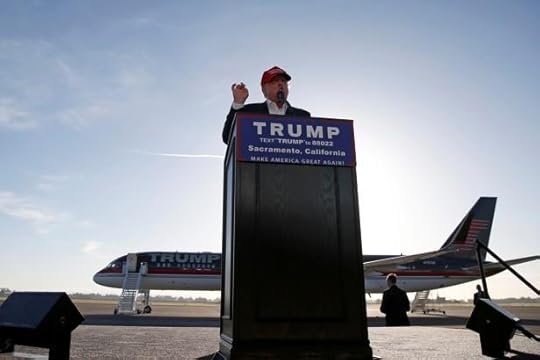
Was Donald Trump’s suggestion last week that Judge Gonzalo Curiel, an American of Mexican descent, could not fairly preside over a lawsuit about so-called Trump University simply an off-the-cuff remark? If so, Trump seems to have decided to go with it. The Wall Street Journal reports:
In an interview, Mr. Trump said U.S. District Judge Gonzalo Curiel had “an absolute conflict” in presiding over the litigation given that he was “of Mexican heritage” and a member of a Latino lawyers’ association. Mr. Trump said the background of the judge, who was born in Indiana to Mexican immigrants, was relevant because of his campaign stance against illegal immigration and his pledge to seal the southern U.S. border. “I’m building a wall. It’s an inherent conflict of interest,” Mr. Trump said.
Perhaps one reason Trump lashed out at Curiel once more was the release of documents from the case on Tuesday, which painted Trump University in an unflattering light.
Trump’s statement is troubling for a variety of reasons. Curiel was born in Indiana to parents who had immigrated from Mexico, and Trump has referred to Mexican immigrants as “rapists” and criminals. But the case at hand involves an allegedly fraudulent series of real-estate seminars Trump set up—in other words, it has nothing to do with ethnicity whatsoever. He has discovered that by grossly insulting a group to which a judge (sort of) belongs, he can then argue that the judge is tainted. As my colleague Peter Beinart, among other observers, has pointed out, Trump’s demand that an unblemished judge step down from the case amounts to an attack on the independence of the American judiciary.
Such attacks are not unprecedented in U.S. history, but those attacks have tended be viewed as shameful and scurrilous in retrospect—and sometimes at the time. The notion that duly appointed or elected judges cannot rule fairly on cases involving groups to which they belong has been soundly rejected. In 2010, defendants arguing for the constitutionality of California’s Proposition 8, which banned same-sex marriage, attempted to disqualify Judge Vaughn Walker because he was gay. One problem with that argument was that it implied that straight judges would also be hopelessly biased. In 1994, Judge Michael Mukasey—who would later serve as attorney general under George W. Bush—denied a motion for him to recuse himself from a World Trade Center bombing trial, on the grounds that he was Jewish and a Zionist. He rejected the idea that the defendant’s bigotry made it necessary for him to withdraw from the case. “That someone with an imagination or a motive might hallucinate relevance is not the standard, and therefore cannot provide the basis for decision,” he wrote.
The pioneering black jurist A. Leon Higginbotham made that point eloquently in a landmark ruling in 1974:
It would be a tragic day for the nation and the judiciary if a myopic vision of the judge's role should prevail, a vision that required judges to refrain from participating in their churches, in their non-political community affairs, in their universities. So long as Jewish judges preside over matters where Jewish and Gentile litigants disagree; so long as Protestant judges preside over matters were Protestant and Catholic litigants disagree; so long as white judges preside over matters where white and black litigants disagree, I will preside over matters where black and white litigants disagree.
Trump’s claim is even less relevant, though, as ethnicity plays no apparent role in the Trump U. case. His argument also sits in uncomfortable contradiction to his prior claims that “the Latinos love me.”
Setting aside the race-baiting claim in this case, Trump’s comment points to a disturbing pattern of behavior. Trump has either proven incapable of disentangling his business concerns from his political campaign, or else is guilty of intentionally intertwining the two. Early in the Trump campaign, cynics and comedians joked that his presidential run was simply a way to further his business concerns. As the campaign progresses, that joke has lost its comedic edge. In his assault on Curiel, Trump has combined a business interest, the class-action lawsuit against Trump University, with a political interest, the wall he claims he will build along the U.S. border with Mexico.
This isn’t the only example of such a conflation; in fact, it’s not even the only example of such a conflation this week. Trump recently revealed that the PGA was moving the World Golf Championship from the Trump Doral course in Florida to—in what might seem like a pointed choice—Mexico. Trump suggested the blow to his golf course could be rectified by his election as the nation’s leader.
“They moved the World Golf Championships from Miami to Mexico City. Can you believe it? Can you believe it?” Trump said in Sacramento. “Not good. But that's OK. Folks, it's all going to be settled. You vote for Donald Trump as president, if I become your president, this stuff is all going to stop.” (Elsewhere he sniped, “I hope they have kidnapping insurance.”)
Trump also suggested reopening the “university,” a move that would be challenging because before the institution’s closure he was forced to rename it, as he had no license to operate a school in New York:
After the litigation is disposed of and the case won, I have instructed my execs to open Trump U(?), so much interest in it! I will be pres.
— Donald J. Trump (@realDonaldTrump) June 2, 2016
As New York’s Jonathan Chait noted, he also more or less promised to run his businesses in concert with his administration of the nation, saying he’d use a blind trust while describing an utterly different arrangement. Presidents running nations as tools of their business interests, and vice versa, is certainly not unheard of—but in kleptocracies, not the United States.
Trump seems determined to frustrate Republican Party leaders, who are fitfully working to coalesce around Trump and accommodate themselves. Earlier on Thursday, House Speaker Paul Ryan—who had been a notable holdout—announced he would endorse Trump. The timing of the latest broadside at Curiel does Ryan no favors. Senate Majority Leader Mitch McConnell, who has also tepidly backed Trump, said on CNN just Thursday afternoon that he was worried Trump could alienate Hispanic voters from the Republican Party, just as Barry Goldwater alienated African Americans from the GOP in 2016. It took just a few hours for Trump to demonstrate exactly what McConnell meant.

Will the Louvre Flood?

The Louvre in Paris will be closed Friday so workers can move art from its lower levels as the threat of flooding becomes more real.
Days of rain in France have caused the Seine, which runs through Paris and past the Louvre, to rise 16 feet and overflow its banks, inundating parts of the French capital. The museum holds some of the world’s more treasured art, including the Mona Lisa.
#Louvre to evacuate art as floodwaters inch higher pic.twitter.com/PrEYLjh7ae
— ClareByrne (@clarebyrneparis) June 2, 2016
The art being moved was kept in underground storage, though that part of the museum has anti-flood pumps and waterproof doors, France24 reported. The Louvre has an emergency-flood plan already in place, and earlier this year as it practiced the drill, it evacuated its underground section in a day. It has also plans to permanently remove many of the artworks in the underground levels to a site in northern France by 2019.

Paul Ryan Finally Falls in Line
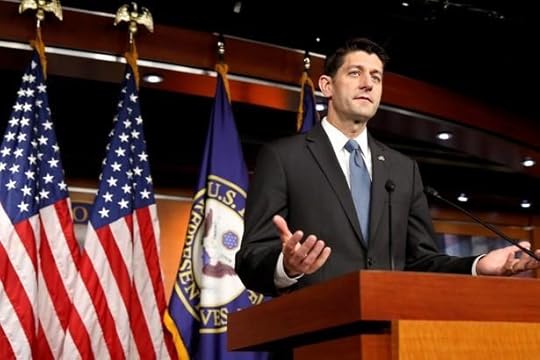
The Great Republican Standoff of 2016 is over: Paul Ryan has endorsed Donald Trump for president.
The House speaker bestowed his formal blessing on Thursday afternoon, ending an awkward holdout period lasting nearly a month after the Republican Party declared Trump its presumptive nominee. And yet after Ryan publicly agonized over his decision in press conferences and television interviews, he delivered his by-now inevitable endorsement in the equivalent of a political whisper: via an op-ed on the website of his hometown newspaper in Wisconsin, The Gazette, published during a congressional recess and while the Democratic nominee, Hillary Clinton, was giving a major national-security address.
Ryan offered his support for Trump at the end of a preview of conservative policy proposals that House Republicans will begin unveiling next week and which the two men have discussed in phone calls and a highly-publicized meeting earlier this month. “Through these conversations, I feel confident he would help us turn the ideas in this agenda into laws to help improve people’s lives,” Ryan wrote. “That’s why I’ll be voting for him this fall.”
“It’s no secret that he and I have our differences,” Ryan added.
I won’t pretend otherwise. And when I feel the need to, I’ll continue to speak my mind. But the reality is, on the issues that make up our agenda, we have more common ground than disagreement.
For me, it’s a question of how to move ahead on the ideas that I—and my House colleagues—have invested so much in through the years. It’s not just a choice of two people, but of two visions for America. And House Republicans are helping shape that Republican vision by offering a bold policy agenda, by offering a better way ahead.
Donald Trump can help us make it a reality.
The policy-minded Ryan has been in a difficult spot from the moment Trump seized control of the GOP primaries. Temperamentally, the two could not be further apart, and while the speaker views his job as a way to promote and, he hopes, enact a specific vision of conservative governance, Trump has shown little interest in policy or conservative doctrine generally. Yet with other Republican leaders, including Mitch McConnell and Kevin McCarthy, quickly if reluctantly rallying behind Trump, Ryan risked isolation by continuing to hold out. Making his position even more awkward was the fact that as House speaker, Ryan will serve as chairman of the convention that will nominate Trump next month in Cleveland. While Ryan insisted that he wanted to avoid “fake” party unity, his endorsement soon became a matter of when more than if.
What did Ryan extract from Trump for his endorsement? Not much, it appears. While he expressed confidence that a President Trump would help Republicans enact their ideas, he notably did not claim that Trump had endorsed any of them in particular. The two remain far apart on their views of immigration, trade, and entitlements, among other issues important to Ryan. But the speaker could clearly see his party—voters and elected leaders alike—falling in line behind Trump anyway, and on Thursday, so did he.

Tegan and Sara, Scientists of the Love Song

Toward the end of their great new song “U-Turn,” Tegan and Sara lay out a series of instructions that, whenever I listen, I can’t help but imagine being presented in a numbered list. “Every time I think I hurt you,” one of the sisters sings, her voice climbing and then descending in pitch, “all I have to do is” …
“Think through what I want”
“List your virtues”
“Apologize. I don’t deserve you.”
The chorus smashes in for step No. 4, which—Q.E.D.—also explains why the tune exists at all: “Now I wanna write a love song, even though you never asked me for one.”
Listening closely to Tegan and Sara, the twin musicians enjoying unprecedented popularity two decades into their career due to 2013’s irresistible Heartthrob, can offer the kind of satisfaction that comes from solving a logic puzzle. Listening less closely can offer the same satisfaction great pop music always does. They bring a scientist’s rigor and an editor’s clarity to the stereotypically mushy topic of love, as well as, lately, to the synth-pop template they’ve helped repopularize on radio. Their trick is conveying lots of information—melodic, rhythmic, and lyrical—while maintaining simplicity and elegance.
Hearththrob was about desire, a subtopic of love served spectacularly by Tegan and Sara’s craftwork. With tight grooves, clipped syllables, and two voices sometimes in counterpoint, songs like “Closer” and “How Come You Don’t Want Me” nailed the moment when yearning overwhelms the impulse to repress. Their new album, Love You to Death, continues the former indie-rock duo’s foray into mass-appeal new wave, but it’s darker, focused mostly on what it’s like to be inside a relationship facing hard times. Some of the songs address a difficult period of sisterly conflict in their past, a topic they’ve said has been off-limits for them till now. The chorus on “Faint of Heart” offers a suitable warning: “Real love is tough.”
The first track, “That Girl,” sets the album’s bittersweet tone in a very cool way. It’s about considering who you’ve become and not liking what you find—an extremely Tegan and Sara concept in that it’s less a demonstration of emotions that it’s a demonstration of thinking about emotions. The song itself is defined by a few different voice lines—natural and manipulated—that swirl around and interlock with each other, recalling both centuries-old madrigals and present-day peers like Haim. Synth drama starts up midway through, but the song might not have needed it: The vocals are moving enough to have worked nearly acapella.
The best moments on Love You to Death share the opener’s melancholy. There’s the wrenching piano ballad “100X,” which delivers an extraordinarily empathetic apology for walking out on someone. It’s the comedown after “White Knuckles,” the widescreen angst-and-joy-of-twinhood anthem that Tegan and Sara have been holding off on making. The tender verses tell of how frightening (and sometimes literally bruising) codependency can be, followed by the kind of megaton chorus that the album’s producer Greg Kurstin—an industry vet who’s helped create smashes like Adele’s “Hello”—excels at.
There are still giddy tracks for dance floors, though few approach Hearthrob’s heights. “Stop Desire” analyzes the fact that you can’t ever do what its title says, and its sound is suitably straightforward: It could have been on Taylor Swift’s 1989, which, of course, was heavily influenced by Tegan and Sara. “Boyfriend” sashays in the verses and pogo-jumps in the chorus as the sisters use transgressive gender terms to sing of a frustrating romance. The sweet and fizzy “BWU” also subtly queers a pop-romance trope as it talks about being too cool for a wedding.
But the most successful would-be hit is “U-Turn.” “Never been the type to leave much room for anyone to speak,” goes the first line of the song, beginning a self-examination that leads to repentance that leads to affection while an array of keyboard lines cheer the emotional progress. Charting how exactly the heart and mind interact while forcing the body to move along, it’s Tegan and Sara’s current appeal distilled as if for an instruction manual on the art of joy.

No More Questions on Human Rights in China
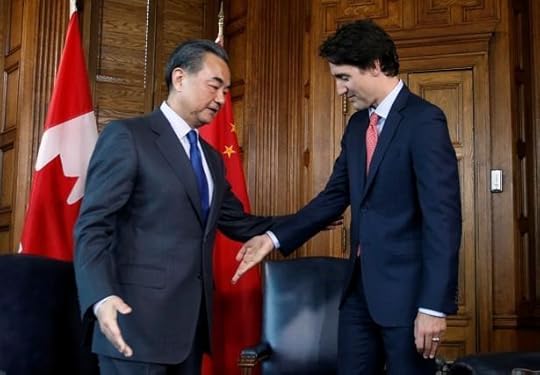
Don’t ask about human rights in China in the presence of Foreign Minister Wang Yi.
At a news conference in Ottawa Wednesday, a Canadian reporter asked Stéphane Dion, the Canadian foreign minister, why Canada was seeking a closer relationship with a country that jails human-rights activists, and has shown increasingly aggressive tactics in the South China Sea.
As The Wall Street Journal reported, Wang cut in, saying through an interpreter:
“Do you understand China? Have you ever been to China?” he said, adding that China’s government had lifted 600 million people out of poverty to become the world’s second biggest economy. “Do you think such development would be possible if China didn’t protect human rights?”
The foreign minister wasn’t finished.
“I’ll tell you: You are not the one who knows best about the human rights situation in China. Chinese people are.” Mr. Wang said. “You don’t have a say in this matter; only Chinese people do.”
Although Wang singled out a reporter, the question was apparently agreed to by several news organizations. Watch the exchange here.
China has cracked down on activists since President Xi Jinping took power in 2012. Last July, the government arrested dozens of lawyers and activists. The police later called them a “criminal gang.” In January, police arrested a Swedish human-rights activist and held him on charges of attempting to undermine the ruling Communist Party.

Prince and Painkillers
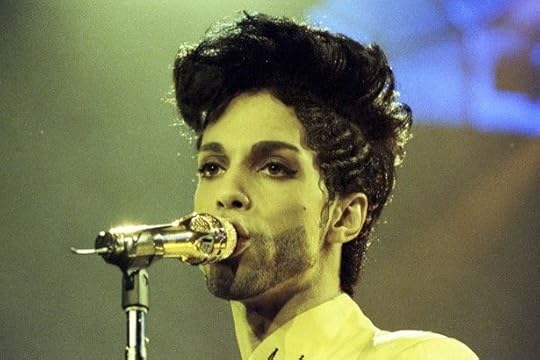
Music icon Prince died in April because of a painkiller overdose, caused by the drug Fentanyl, according to the Midwest Medical Examiner’s Office, the agency overseeing the toxicology report.
There has been speculation since the singer’s death at his home outside Minneapolis that a drug overdose was the cause. And this report confirms that.
The Huffington Post tweeted an image of the official report:
UPDATE: Prince died from an overdose of Fentanyl. https://t.co/O24BbfsNgV pic.twitter.com/742f8wWKkC
— HuffPostEnt (@HuffPostEnt) June 2, 2016
Prince had been prescribed drugs in the weeks before his death, and his plane had even made an emergency stop in Moline, Illinois, for treatment on the way home from a concert in Atlanta. The Associated Press had reported that the reason for the emergency landing was because Prince had gone unconscious. First responders gave him a shot of Narcan, the AP reported, which is a drug often used to treat opioid overdoses.
There are two doctors who’ve come up in the investigation, one of whom prescribed Prince medication; the other an addiction specialist scheduled to meet with the singer around the time he died.
Prince was not known to take drugs, and the AP reported that if he did have an addiction, his friends saw no signs of it. However, he did complain of hip and knee problems that he attributed to years of performing on stage. Fentanyl is a synthetic opiate, more potent that morphine. It’s generally used to treat only severe pain, or given to patients after surgery.

A New Origin Story for Dogs
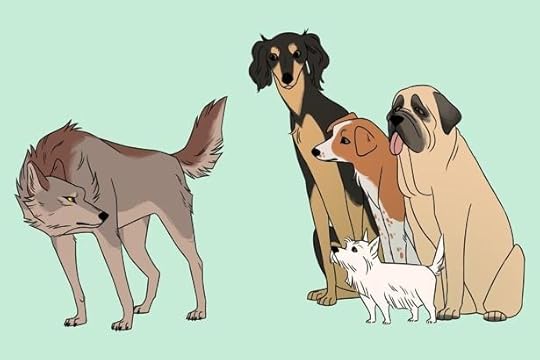
Tens of thousands of years ago, before the internet, before the Industrial Revolution, before literature and mathematics, bronze and iron, before the advent of agriculture, early humans formed an unlikely partnership with another animal—the grey wolf. The fates of our two species became braided together. The wolves changed in body and temperament. Their skulls, teeth, and paws shrank. Their ears flopped. They gained a docile disposition, becoming both less frightening and less fearful. They learned to read the complex expressions that ripple across human faces. They turned into dogs.
Today, dogs are such familiar parts of our lives—our reputed best friends and subject of many a meme—that it’s easy to take them, and what they represent, for granted. Dogs were the first domesticated animals, and their barks heralded the Anthropocene. We raised puppies well before we raised kittens or chickens; before we herded cows, goats, pigs, and sheep; before we planted rice, wheat, barley, and corn; before we remade the world.
“Remove domestication from the human species, and there’s probably a couple of million of us on the planet, max,” says archaeologist and geneticist Greger Larson. “Instead, what do we have? Seven billion people, climate change, travel, innovation and everything. Domestication has influenced the entire earth. And dogs were the first.” For most of human history, “we’re not dissimilar to any other wild primate. We’re manipulating our environments, but not on a scale bigger than, say, a herd of African elephants. And then, we go into partnership with this group of wolves. They altered our relationship with the natural world.”
Larson wants to pin down their origins. He wants to know when, where, and how they were domesticated from wolves. But after decades of dogged effort, he and his fellow scientists are still arguing about the answers. They agree that all dogs, from low-slung corgis to towering mastiffs, are the tame descendants of wild ancestral wolves. But everything else is up for grabs.
Some say wolves were domesticated around 10,000 years ago, while others say 30,000. Some claim it happened in Europe, others in the Middle East, or East Asia. Some think early human hunter-gatherers actively tamed and bred wolves. Others say wolves domesticated themselves, by scavenging the carcasses left by human hunters, or loitering around campfires, growing tamer with each generation until they became permanent companions.
Dogs were domesticated so long ago, and have cross-bred so often with wolves and each other, that their genes are like “a completely homogenous bowl of soup,” Larson tells me, in his office at the University of Oxford. “Somebody goes: what ingredients were added, in what proportion and in what order, to make that soup?” He shrugs his shoulders. “The patterns we see could have been created by 17 different narrative scenarios, and we have no way of discriminating between them.”
The only way of doing so is to look into the past. Larson, who is fast-talking, eminently likable, and grounded in both archaeology and genetics, has been gathering fossils and collaborators in an attempt to yank the DNA out of as many dog and wolf fossils as he can. Those sequences will show exactly how the ancient canines relate to each other and to modern pooches. They’re the field’s best hope for getting firm answers to questions that have hounded them for decades.
And already, they have yielded a surprising discovery that could radically reframe the debate around dog domestication, so that the big question is no longer when it happened, or where, but how many times.
* * *
On the eastern edge of Ireland lies Newgrange, a 4,800-year-old monument that predates Stonehenge and the pyramids of Giza. Beneath its large circular mound and within its underground chambers lie many fragments of animal bones. And among those fragments, Dan Bradley from Trinity College Dublin found the petrous bone of a dog.
Press your finger behind your ear. That’s the petrous. It’s a bulbous knob of very dense bone that’s exceptionally good at preserving DNA. If you try to pull DNA out of a fossil, most of it will come from contaminating microbes and just a few percent will come from the bone’s actual owner. But if you’ve got a petrous bone, that proportion can be as high as 80 percent. And indeed, Bradley found DNA galore within the bone, enough to sequence the full genome of the long-dead dog.
Larson and his colleague Laurent Frantz then compared the Newgrange sequences with those of almost 700 modern dogs, and built a family tree that revealed the relationships between these individuals. To their surprise, that tree had an obvious fork in its trunk—a deep divide between two doggie dynasties. One includes all the dogs from eastern Eurasia, such as Shar Peis and Tibetan mastiffs. The other includes all the western Eurasian breeds, and the Newgrange dog.
The genomes of the dogs from the western branch suggest that they went through a population bottleneck—a dramatic dwindling of numbers. Larson interprets this as evidence of a long migration. He thinks that the two dog lineages began as a single population in the east, before one branch broke off and headed west. This supports the idea that dogs were domesticated somewhere in China.
But there’s a critical twist.
The team calculated that the two dog dynasties split from each other between 6,400 and 14,000 years ago. But the oldest dog fossils in both western and eastern Eurasia are older than that. Which means that when those eastern dogs migrated west into Europe, there were already dogs there.
To Larson, these details only make sense if dogs were domesticated twice.
“Through gritted teeth, I said: We’re fucking doing dogs. And he said: I’m in.”
Here’s the full story, as he sees it. Many thousands of years ago, somewhere in western Eurasia, humans domesticated grey wolves. The same thing happened independently, far away in the east. So, at this time, there were two distinct and geographically separated groups of dogs. Let’s call them Ancient Western and Ancient Eastern. Around the Bronze Age, some of the Ancient Eastern dogs migrated westward alongside their human partners, separating from their homebound peers and creating the deep split in Larson’s tree. Along their travels, these migrants encountered the indigenous Ancient Western dogs, mated with them (doggy style, presumably), and effectively replaced them.
Today’s eastern dogs are the descendants of the Ancient Eastern ones. But today’s western dogs (and the Newgrange one) trace most of their ancestry to the Ancient Eastern migrants. Less than 10 percent comes from the Ancient Western dogs, which have since gone extinct.
This is a bold story for Larson to endorse, not least because he himself has come down hard on other papers suggesting that cows, sheep, or other species were domesticated twice. “Any claims for more than one need to be substantially backed up by a lot of evidence,” he says. “Pigs were clearly domesticated in Anatolia and in East Asia. Everything else is once.” Well, except maybe dogs.
* * *
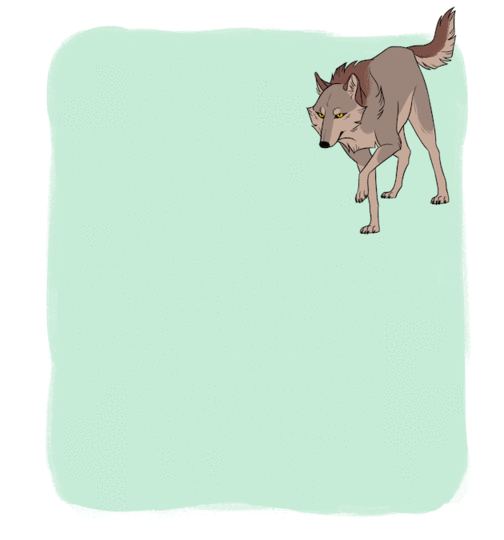
Katie Salvi
Other canine genetics experts think that Larson’s barking up the wrong tree. “I’m somewhat underwhelmed, since it’s based on a single specimen,” says Bob Wayne from the University of California, Los Angeles. He buys that there’s a deep genetic division between modern dogs. But, it’s still possible that dogs were domesticated just once, creating a large, widespread, interbreeding population that only later resolved into two distinct lineages.
In 2013, Wayne’s team compared the mitochondrial genomes (small rings of DNA that sit outside the main set) of 126 modern dogs and wolves, and 18 fossils. They concluded that dogs were domesticated somewhere in Europe or western Siberia, between 18,800 and 32,100 years ago. And genes aside, “the density of fossils from Europe tells us something,” says Wayne. “There are many things that look like dogs, and nothing quite like that in east Asia.”
Peter Savolainen from the KTH Royal Institute of Technology in Stockholm disagrees. By comparing the full genomes of 58 modern wolves and dogs, his team has shown that dogs in southern China are the most genetically diverse in the world. They must have originated there around 33,000 years ago, he says, before a subset of them migrated west 18,000 years later.
That’s essentially the same story that Larson is telling. The key difference is that Savolainen doesn’t buy the existence of an independently domesticated group of western dogs. “That’s stretching the data very much,” he says. Those Ancient Western dogs might have just been wolves, he says. Or perhaps they were an even earlier group of migrants from the east. “I think the picture must seem a bit chaotic,” he says understatedly. “But for me, it’s pretty clear. It must have happened in southern East Asia. You can’t interpret it any other way.”
Except, you totally can. Wayne does (“I’m certainly less dogmatic than Peter,” he says). Adam Boyko from Cornell University does, too: after studying the genes of village dogs—free-ranging mutts that live near human settlements—he argued for a single domestication in Central Asia, somewhere near India or Nepal. And clearly, Larson does as well.
Larson adds that his gene-focused peers are ignoring one crucial line of evidence—bones. If dogs originated just once, there should be a neat gradient of fossils with the oldest ones at the center of domestication and the youngest ones far away from it. That’s not what we have. Instead, archaeologists have found 15,000-year-old dog fossils in western Europe, 12,500-year-old ones in east Asia, and nothing older than 8,000 years in between.
“If we’re wrong, then how on earth do you explain the archaeological data?” says Larson. “Did dogs jump from East Asia to Western Europe in a week, and then go all the way back 4,000 years later?” No. A dual domestication makes more sense. Mietje Genompré, an archaeologist from the Royal Belgian Institute of Natural Sciences, agrees that the bones support Larson’s idea. “For me, it’s very convincing,” she says.
But even Larson is hedging his bets. When I ask him how strong his evidence is, he says, “Like, put a number on it? If was being bold, I’d say it’s a 7 out of 10. We lack the smoking gun.”
Why is this is so hard? Of all the problems that scientists struggle with, why has the origin of dogs been such a bitch to solve?
“And then, we go into partnership with this group of wolves. They altered our relationship with the natural world.”
For starters, the timing is hard to pin down because no one knows exactly how fast dog genomes change. That pace—the mutation rate—underpins a lot of genetic studies. It allows scientists to compare modern dogs and ask: How long ago must these lineages have diverged in order to build up this many differences in their genes? And since individual teams use mutation rate estimates that are wildly different, it’s no wonder they’ve arrive at conflicting answers.
Regardless of the exact date, it’s clear that over thousands of years, dogs have mated with each other, cross-bred with wolves, travelled over the world, and been deliberately bred by humans. The resulting ebb and flow of genes has turned their history into a muddy, turbid mess—the homogeneous soup that Larson envisages.
Wolves provide no clarity. Grey wolves used to live across the entire Northern Hemisphere, so they could have potentially been domesticated anywhere within that vast range (although North America is certainly out). What’s more, genetic studies tell us that no living group of wolves is more closely related to dogs than any other, which means that the wolves that originally gave rise to dogs are now extinct. Sequencing living wolves and dogs will never truly reveal their shrouded past; it’d be, as Larson says, like trying to solve a crime when the culprit isn’t even on the list of suspects.
“The only way to know for sure is to go back in time,” he adds.
* * *
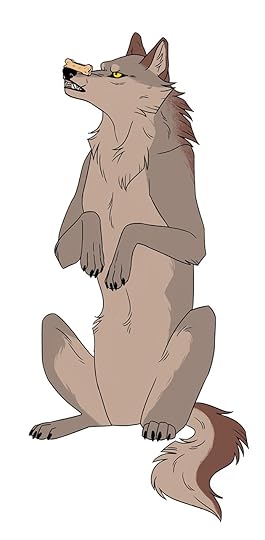
Katie Salvi
The study informally known as the Big Dog Project was born of frustration. Back in 2011, Larson was working hard on the origin of domestic pigs, and became annoyed that scientists studying dogs were getting less rigorous papers in more prestigious journals, simply because their subjects were that much more charismatic and media-friendly. So he called up his longstanding collaborator Keith Dobney. “Through gritted teeth, I said: We’re fucking doing dogs. And he said: I’m in.”
Right from the start, the duo realized that studying living dogs would never settle the great domestication debate. The only way to do that was to sequence ancient DNA from fossil dogs and wolves, throughout their range and at different points in history. While other scientists were studying the soup of dog genetics by tasting the finished product, Larson would reach back in time to taste it at every step of its creation, allowing him to definitively reconstruct the entire recipe.
In recent decades, scientists have become increasingly successful at extracting and sequencing strands of DNA from fossils. This ancient DNA has done wonders for our understanding of our own evolution. It showed, for example, how Europe was colonized 40,000 years ago by hunter-gatherers moving up from Africa, then 8,000 years ago by Middle Eastern farmers, and 5,000 years ago by horse-riding herders from the Russian steppes. “Everyone in Europe today is a blend of those three populations,” says Larson, who hopes to parse the dog genome in the same way, by slicing it into its constituent ingredients.
Larson originally envisaged a small project—just him and Dobney analyzing a few fossils. But he got more funding, collaborators, and samples than he expected. “It just kind of metastasized out of all proportion,” he says. He and his colleagues would travel the world, drilling into fossils and carting chips of bone back to Oxford. They went to museums and private collections. (“There was a guy up in York who had a ton of stuff in his garage.”) They grabbed bones from archaeological sites.
The pieces of bone come back to a facility in Oxford called the Palaeo-BARN—the Palaeogenomics and Bioarchaeology Research Network. When I toured the facility with Larson, we wore white overalls, surgical masks, oversoles, and purple gloves, to keep our DNA (and that of our skin microbes) away from the precious fossil samples. Larson called them ‘spacesuits.’ I was thinking ‘thrift-store ninja.’
In one room, the team shoves pieces of bone into a machine that pounds it with a small ball bearing, turning solid shards into fine powder. They then send the powder through a gauntlet of chemicals and filters to pull out the DNA and get rid of everything else. The result is a tiny drop of liquid that contains the genetic essence of a long-dead dog or wolf. Larson’s freezer contains 1,500 such drops, and many more are on the way. “It’s truly fantastic the kind of data that he has gathered,” says Savolainen.
True to his roots in archaeology, Larson isn’t ignoring the bones. His team photographed the skulls of some 7,000 prehistoric dogs and wolves at 220 angles each, and rebuilt them in virtual space. They can use a technique called geometric morphometrics to see how different features on the skulls have evolved over time.
The two lines of evidence—DNA and bones—should either support or refute the double domestication idea. It will also help to clear some confusion over a few peculiar fossils, such as a 36,000 year old skull from Goyet cave in Belgium. Genompré thinks it’s a primitive dog. “It falls outside the variability of wolves: it’s smaller and the snout is different,” she says. Others say it’s too dissimilar to modern dogs. Wayne has suggested that it represents an aborted attempt at domestication—a line of dogs that didn’t contribute to modern populations and is now extinct.
Maybe the Goyet hound was part of Larson’s hypothetical Ancient Western group, domesticated shortly after modern humans arrived in Europe. Maybe it represented yet another separate flirtation with domestication. All of these options are on the table, and Larson thinks he has the data to tell them apart. “We can start putting numbers on the difference between dogs and wolves,” he says. “We can say this is what all the wolves at this time period look like; does the Goyet material fall within that realm, or does it look like dogs from later on?”
Larson hopes to have the first big answers within six to twelve months. “I think it’ll clearly show that some things can’t be right, and will narrow down the number of hypotheses,” says Boyko. “It may narrow it down to one but I’m not holding my breath on that.” Wayne is more optimistic. “Ancient DNA will provide much more definitive data than we had in the past,” he says. “[Larson] convinced everyone of that. He’s a great diplomat.”
Indeed, beyond accumulating DNA and virtual skulls, Larson’s greatest skill is in gathering collaborators. In 2013, he rounded up as many dog researchers as he could and flew them to Aberdeen, so he could get them talking. “I won’t say there was no tension,” he says. “You go into a room with someone who has written something that sort of implies you aren’t doing very good science... there will be tension. But it went away very quickly. And, frankly: alcohol.”
“Everyone was like: You know what? If I’m completely wrong and I have to eat crow on this, I don’t give a shit. I just want to know.”

Atlantic Monthly Contributors's Blog
- Atlantic Monthly Contributors's profile
- 1 follower



